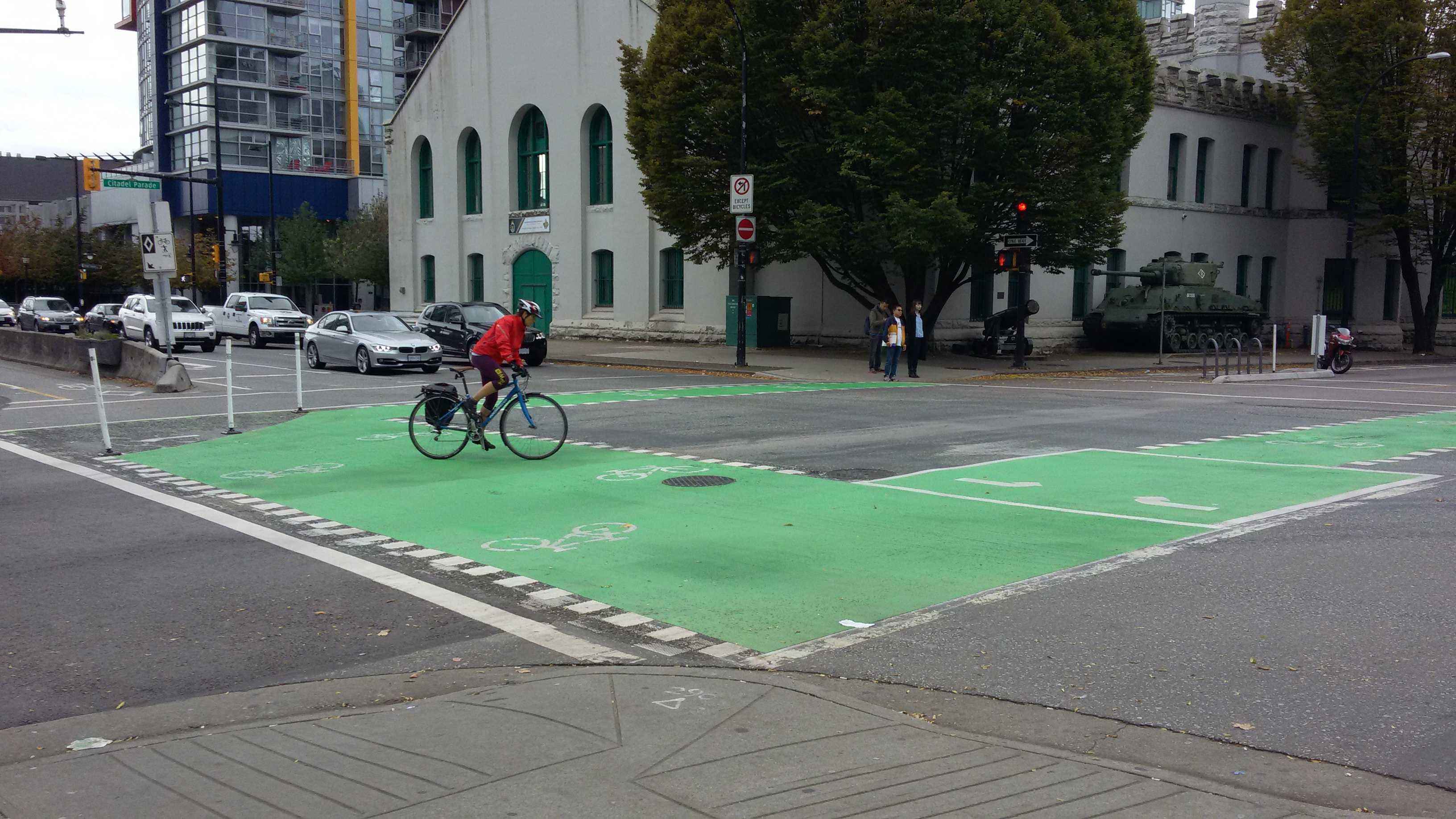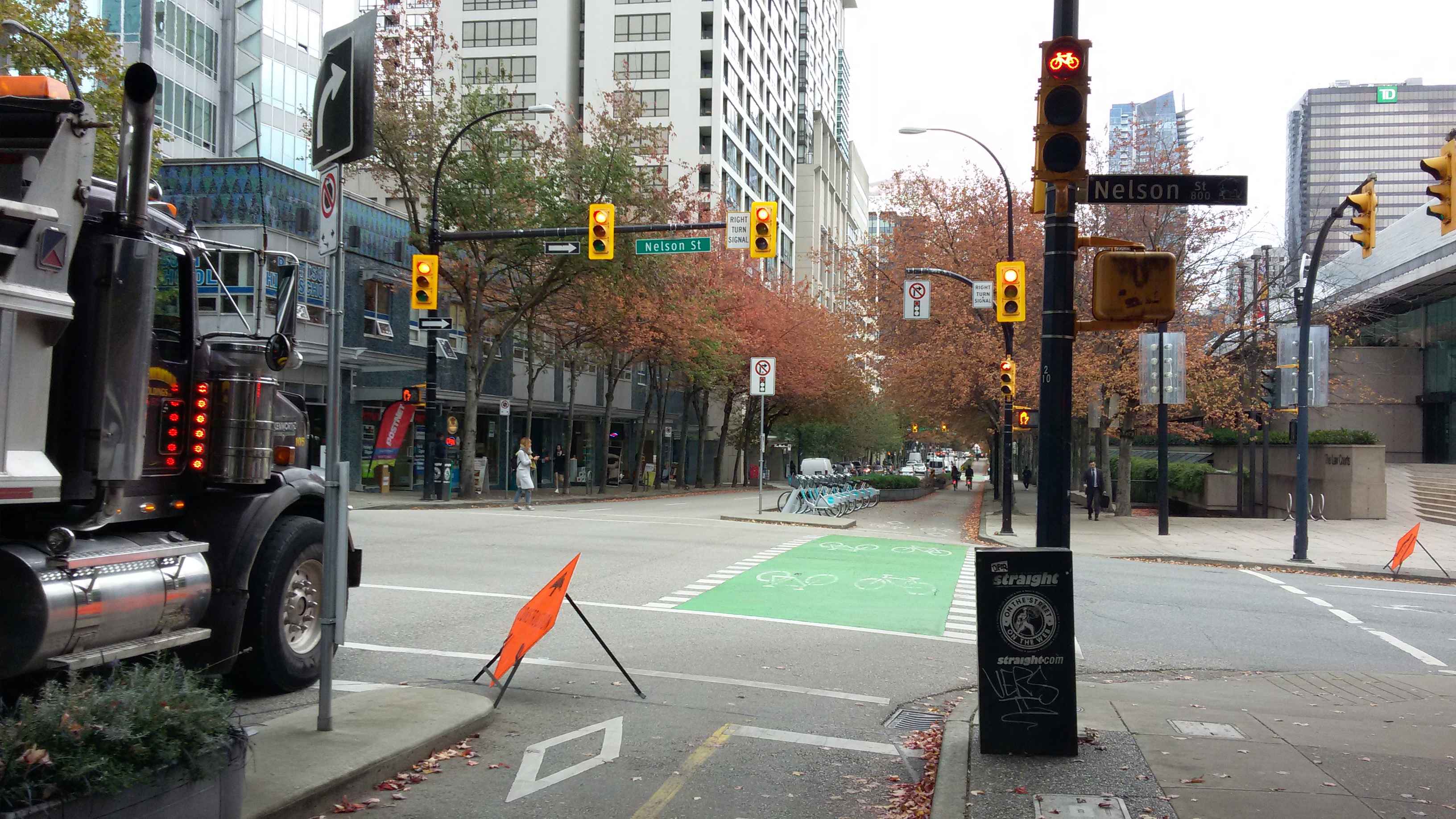Once again today I was blown away by being so generously welcomed by some talented and experienced (and, no doubt, busy) practitioners. I met with David Rawsthorne and Mike Anderson from the City of Vancouver along with Gavin Davidson from Alta Planning and Design. We met at Alta and someone made the mistake of asking me if I had any questions. An hour or so later, we were ready to ride!
I found out that the magic threshold Dongho told me about while I was in Seattle comes from Vancouver. They say that above 150 vehicle movements / hour it's necessary to fully protect a turn across a cycleway. This is an empirical value, derived when the city was first looking at developing protected bike lanes. They looked at a number of comparable sites where engineers had chosen to ban turns across a cycle lane. And it's supported by the fact that CROW also has a similar recommendation. But they haven't yet gone back to assess their protected bike lanes and determine whether this is really the "right" value for the North American context.
In terms of choosing between 1-way and 2-way protected bike lanes, Vancouver's hierarchy of preference is:
1. 2 x 1-way protected bike lanes
2. 2-way protected bike lane on a 1-way street, to the left of general traffic
3. 2-way protected bike lane on a 1-way street, to the right of general traffic
4. 2-way protected bike lane on a 2-way street
But, as is the case for several of their facilities, there are often other factors that come into play, such as connectivity with the rest of the network, key origins and destinations, land use etc etc. They've found that it gets tricky when 2-way PBLs intersect with other PBLs, especially in terms of accommodating all the possible turning movements in a way that's legible and intuitive for people on bikes.

Another interesting discovery today was on the Hornby Street PBL, which is a 2-way PBL on the right of a 1-way street (an example of where it was necessary to use one of the least-desired scenarios as per the hierarchy above) it was found that there was a prevalence crashes between cyclists travelling in the contra-flow direction and right turning motorists. The designers weren't expecting this, as they assumed that these two users would have clear visibility of each other. However, it does support the hesitation we've been having in New Zealand with respect to cycling in the contra-flow direction, even when a one-way street is involved.

After a lot of great technical discussion today, I'm looking forward to seeing cycling in Vancouver from a different angle tomorrow when I meet with Chris Bruntlett from Modacity (if that doesn't ring any bicycle bells for you, stay tuned to find out more!)


